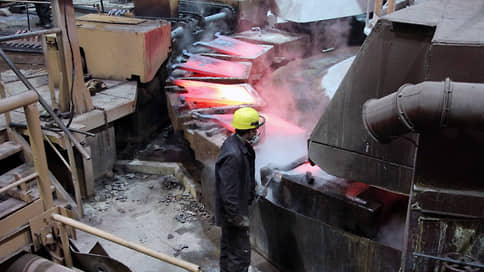Stocks of Russian copper on the LME exchanges more than halved
[ad_1]

Stocks of Russian copper on the LME exchanges have more than halved since January 2023. At the same time, stocks of other Russian non-ferrous metals — nickel and aluminum — rose significantly amid fears of sanctions and a general decline in demand for industrial metals. Analysts note that the demand for copper is pushing the production of electric vehicles and the development of renewable energy sources, which leads to a shortage of the metal.
Stocks of Russian copper in LME warehouses as of June 30 amounted to 22.7 thousand tons, which is almost two times less than at the end of January this year, when 52 thousand tons of this metal were stored in warehouses, follows from the latest data from the exchange. Now, out of the total volume of copper in LME warehouses, metal of Russian origin accounts for 66% against 96% at the end of January.
The reduction in copper reserves is out of the general trend. As early as last year, stocks of metals of Russian origin in LME warehouses began to grow, as consumers began to avoid purchasing them, fearing possible sanctions. Since January, the total reserves of Russian metals have increased by 63%, to 249 thousand tons: the volume of nickel – by 18%, to 7.9 thousand tons, primary aluminum – by 2.3 times, to 218 thousand tons. Stocks of aluminum alloys have halved to 200 tons. Total inventories at the LME increased by 25% in seven months to 451 kt, indicating a slowdown in the global economy and reduced demand for industrial metals.
According to the data of the exchange, a sharp reduction in copper stocks (by 41%) occurred in February. During this period, the price of copper decreased slightly – by 2%. The largest copper exporters from the Russian Federation are Norilsk Nickel and UMMC. In its February market review, Norilsk Nickel noted a significant decrease in refined copper stocks in stock exchanges due to excess demand over supply and disruptions in the supply chain. At the time, the company was estimating total LME, SHFE and CME copper exchange inventories in four days of global consumption, the lowest level in 14 years. Inventories of copper in bonded warehouses in China have decreased by 71% since the beginning of the year, to 55 thousand tons, which is the lowest level in more than a decade. This year, the MMC expects mines and refiners to increase production by 2%, while demand will rise by 2%, resulting in a moderate deficit of 160 thousand tons. In the long term (by 2030), the deficit of copper could be 5-9 million tons, according to Norilsk Nickel, as demand for the production of electric vehicles, green energy and developing main power grids exceeds the production of the metal, taking into account both all existing and upcoming projects.
Last year, the LME held consultations to ban the supply of aluminum, copper and nickel from Russia to its warehouses. This ban would not directly affect the activities of Russian companies, since large metallurgical companies, as a rule, sell their products under long-term contracts directly to end consumers, and the surplus to traders. Russian metal enters the warehouses of stock exchanges mainly in the course of secondary transactions. Pressure on the exchange was exerted by Alcoa, which insisted on the exclusion of Russian aluminum from the listing of the exchange, but in the end such a decision was not made.
World copper consumption in 2022 exceeded more than 26 million tons, and Russia’s share in world copper production is about 4%, comments Boris Krasnozhenov from Alfa Bank. Thus, stocks in LME warehouses are negligible relative to global consumption. At the moment, the copper market is facing a shortage due to a lack of new large economically attractive deposits, he says. Given the growth in copper consumption in the electric vehicle and renewable energy sectors, the market may face a structural shortage of the metal in the medium term.
[ad_2]
Source link





